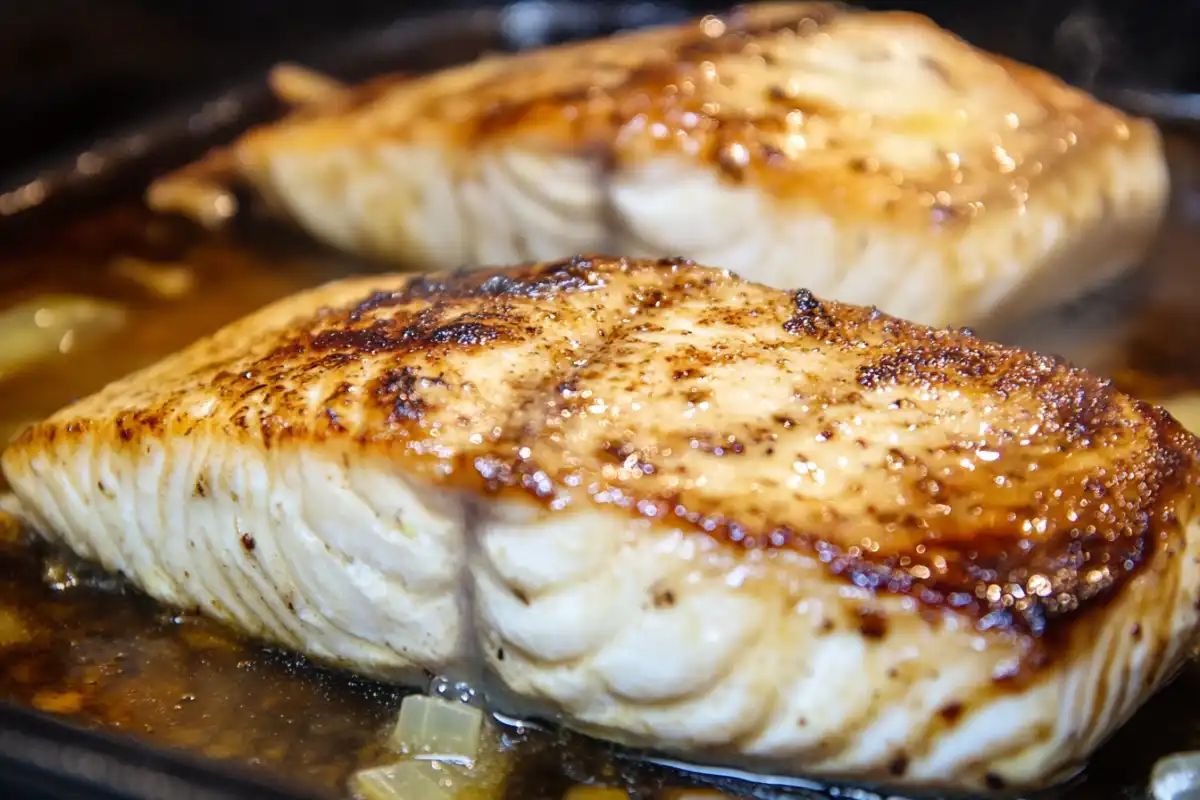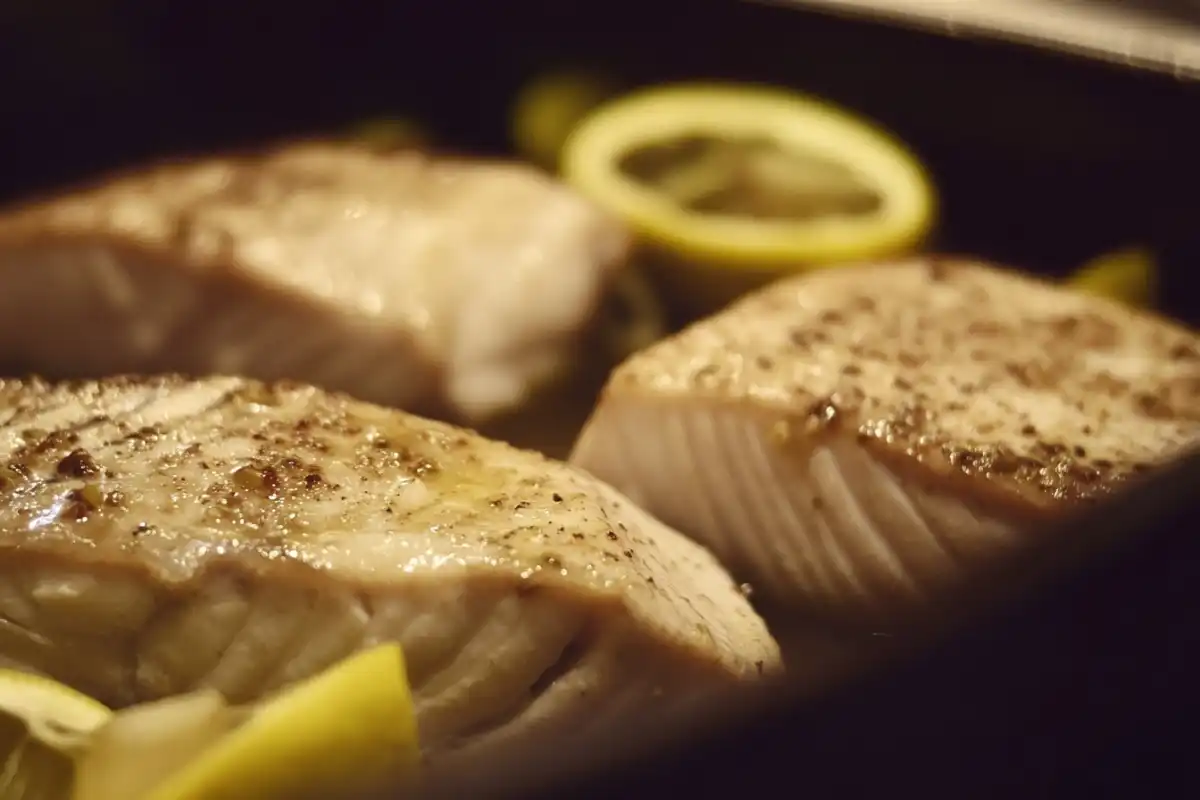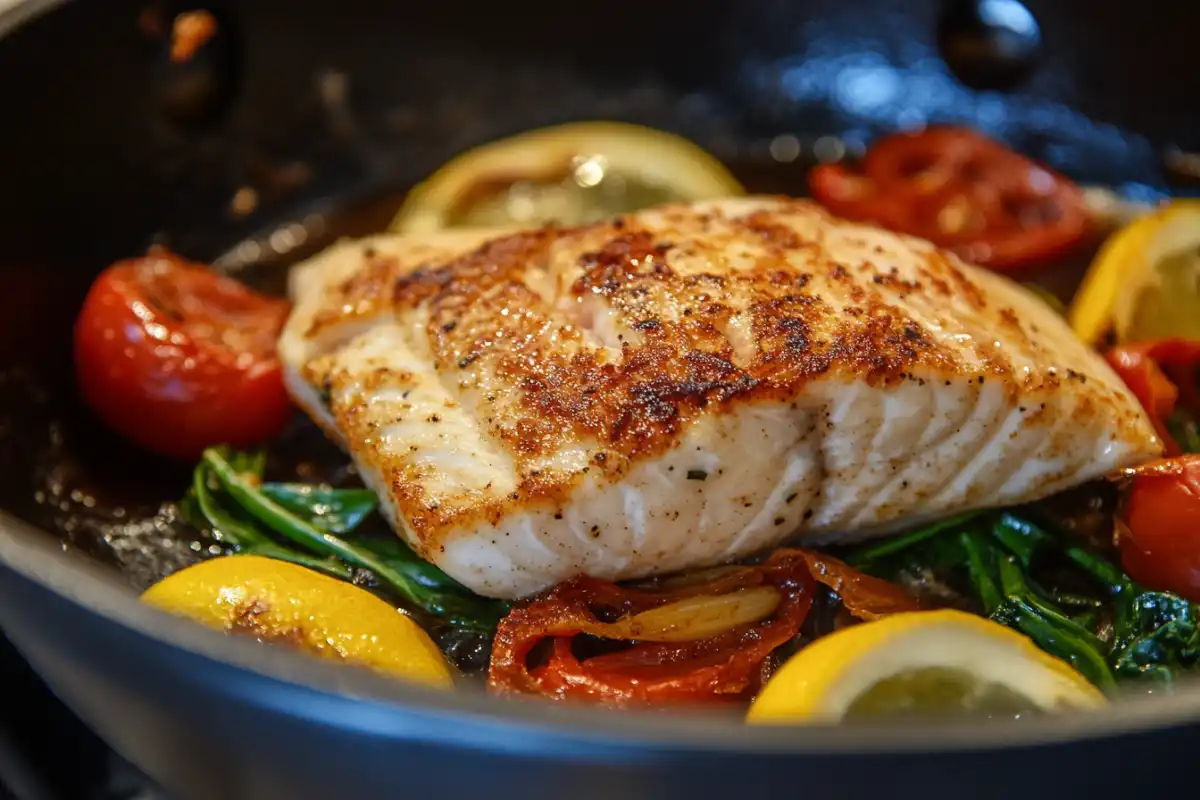Mahi Mahi is a tropical fish renowned for its firm texture, mild flavor, and versatility in cooking. Whether you’re new to seafood or a seasoned fish lover, this comprehensive guide covers everything you need to know about Mahi Mahi. From its nutritional benefits and sustainability to the best cooking methods, we’ve got you covered. With this article, you’ll have all the knowledge to confidently prepare delicious Mahi Mahi dishes.
What is Mahi Mahi?

Mahi Mahi, also called dolphin fish or Coryphaena hippurus, is a tropical and subtropical fish found in the open ocean. Despite its common name, Mahi Mahi is not related to the dolphin mammal but is prized for its vibrant appearance and rich culinary uses. This fish is typically recognized for its bright blue, green, and yellow colors. It’s a fast-growing species, which makes it highly sustainable, and it’s caught in abundance in the Pacific and Atlantic Oceans.
The name Mahi Mahi is derived from the Hawaiian language, meaning “strong strong,” which references the fish’s fast swimming abilities. With its mild taste and firm texture, Mahi Mahi is widely loved for its versatility in cooking, whether grilled, baked, seared, or fried. It is commonly found in dishes across many cuisines, including Mediterranean, Asian, and Caribbean.
Nutritional Benefits
When it comes to seafood, Mahi Mahi stands out as a nutritious and delicious choice. This lean fish is low in calories and fat, making it an ideal protein source for health-conscious eaters. A 3-ounce serving of Mahi Mahi contains approximately:
- Calories: 93 kcal
- Protein: 20 grams
- Fat: 1 gram (low in saturated fat)
- Omega-3 fatty acids: Essential for heart health
- Vitamins: Rich in vitamin B12 and niacin
- Minerals: Contains potassium, selenium, and phosphorus
The high protein content in Mahi Mahi makes it an excellent option for those looking to build or maintain muscle. It’s also a great source of Omega-3 fatty acids, which are known to promote cardiovascular health by reducing inflammation and lowering blood pressure.
If you’re curious about how Mahi Mahi compares to other protein sources, check out the Eggs by the Dozen Guide, which details another high-protein option.
Sustainability

One of the best aspects of choosing Mahi Mahi is its sustainability. The fish’s rapid growth and short lifespan contribute to its population’s resilience, making it a more sustainable choice compared to slower-growing fish like tuna or swordfish. Furthermore, Mahi Mahi is caught using responsible fishing practices, ensuring that ecosystems remain healthy and marine life isn’t overexploited.
Mahi Mahi fisheries are often regulated by government bodies to ensure sustainable harvesting. These regulations are critical in maintaining the balance of marine life while providing a steady supply of this delicious fish to consumers. The fish’s natural abundance also means it doesn’t require extensive farming practices that could harm the environment.
For consumers seeking to make eco-conscious choices, choosing fish like Mahi Mahi that are caught using sustainable methods is a step in the right direction. Additionally, certification programs such as those endorsed by the Monterey Bay Aquarium ensure that you are choosing seafood that is harvested responsibly.
For more insight into sustainable seafood options, you can explore similar fish choices like tobiko, highlighted in this Ultimate Guide to Tobiko, another example of a responsibly sourced ocean delicacy.
Best Ways to Cook
Mahi Mahi is an incredibly versatile fish that can be prepared in a variety of ways. Whether you prefer grilling, baking, searing, or frying, this fish holds up well to different cooking methods while still delivering great flavor. Here are some of the most popular ways to cook Mahi Mahi:
Grilling Mahi Mahi
Grilling is one of the best methods for cooking Mahi Mahi. Its firm texture makes it ideal for grilling because it won’t fall apart like some flakier fish. A simple marinade of lemon, garlic, olive oil, and herbs enhances the natural flavors of the fish without overpowering it. Grill the fish for about 4-5 minutes per side until the flesh is opaque and flakes easily with a fork. Serve with a side of grilled vegetables or a light salad for a healthy and delicious meal.
Pan-Seared Mahi Mahi
Searing Mahi Mahi in a hot pan is another great way to lock in moisture while creating a crispy exterior. To sear the fish, heat a tablespoon of olive oil in a skillet over medium-high heat. Season the fish with salt, pepper, and your choice of herbs, then cook for 3-4 minutes on each side, or until golden brown. Pair with a lemon butter sauce or a fresh salsa for added flavor.
Baked Mahi Mahi: A Healthy Option
For those who prefer a low-fat cooking method, baking Mahi Mahi is an excellent choice. Baking allows you to cook the fish without the need for added oils, making it a lighter dish. Preheat your oven to 375°F (190°C) and prepare a baking dish with parchment paper or a light coat of olive oil.
Place the Mahi Mahi fillets in the dish and season them with your favorite spices. Popular choices include paprika, garlic powder, and a squeeze of fresh lemon. You can also add vegetables like cherry tomatoes, asparagus, or bell peppers to the dish to create a complete meal.
Bake the fish for about 12-15 minutes, depending on the thickness of the fillets, until the flesh turns opaque and flakes easily with a fork. This simple yet healthy method retains the natural flavors of the fish and can be served with a side of quinoa, brown rice, or a fresh salad.
Health Benefits
Eating Mahi Mahi regularly can contribute significantly to a healthy diet. Its nutritional profile makes it an ideal option for those seeking to eat lean, high-protein meals without sacrificing flavor. Here are some of the key health benefits of incorporating Mahi Mahi into your diet:
Supports Heart Health
Mahi Mahi is rich in Omega-3 fatty acids, which are essential for maintaining heart health. These fatty acids help reduce inflammation, lower blood pressure, and decrease the risk of cardiovascular diseases. Incorporating Omega-3-rich fish like Mahi Mahi into your diet can help you maintain a healthy heart and reduce the risk of heart-related complications.
Promotes Muscle Growth
For those focused on fitness or muscle building, Mahi Mahi provides an excellent source of lean protein. With 20 grams of protein per 3-ounce serving, this fish can help you meet your daily protein needs while avoiding excess fat. The high-quality protein in Mahi Mahi supports muscle repair and growth, making it an excellent choice for post-workout meals.
Low in Mercury
Compared to other popular seafood like swordfish and tuna, Mahi Mahi contains significantly lower levels of mercury. This makes it a safer choice for regular consumption, especially for pregnant women, young children, and those who are health-conscious.
Frequently Asked Questions About Mahi Mahi
If you’re new to Mahi Mahi or seafood in general, you may have some questions. Below are some of the most common inquiries about this versatile fish:
What is Mahi Mahi?
Mahi Mahi is a tropical fish known for its vibrant colors and firm texture. It is a popular seafood choice because of its mild flavor and versatility in cooking. Mahi Mahi is commonly found in warm waters across the globe, including the Pacific and Atlantic Oceans.
Is Mahi Mahi Sustainable?
Yes, Mahi Mahi is considered a sustainable seafood option due to its rapid growth and short lifespan. These characteristics allow the fish population to replenish quickly, making it a more environmentally friendly choice compared to slower-growing species. You can further explore sustainability in seafood with this guide on sustainable sushi ingredients like tobiko.
What Does Mahi Mahi Taste Like?
Mahi Mahi has a mild, slightly sweet flavor, making it a versatile fish that pairs well with a wide range of seasonings. Its firm texture holds up well to different cooking methods, making it ideal for grilling, baking, or pan-searing.
How Do You Cook Mahi Mahi?
Mahi Mahi can be cooked in various ways, including grilling, searing, baking, and frying. Its firm texture makes it perfect for grilling, while its mild flavor pairs well with light, citrus-based marinades or sauces. For a healthier option, baking Mahi Mahi with fresh herbs and vegetables is a simple and nutritious choice.
Conclusion

Mahi Mahi is a versatile and nutritious fish that can be enjoyed in a variety of dishes. Whether you’re grilling it for a summer BBQ or baking it for a light and healthy meal, this fish provides numerous health benefits while being a sustainable choice for eco-conscious consumers. Its lean protein content, low mercury levels, and rich Omega-3 fatty acids make it an excellent addition to any diet.
By exploring different cooking methods and recipes, you can create delicious meals that showcase the natural flavors of Mahi Mahi. Additionally, by choosing sustainably sourced seafood like Mahi Mahi, you’re making an environmentally responsible choice.
To further enhance your seafood knowledge, be sure to check out our guide on other ocean delicacies like tobiko in this Ultimate Guide to Tobiko.
For more information
Why is mahi mahi on the avoid list?
Is mahi mahi a good fish to eat?
